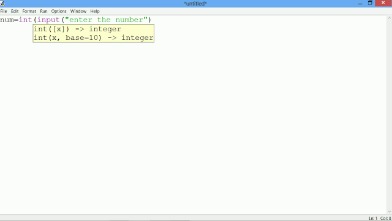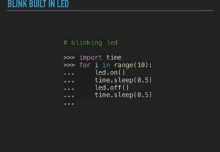
Content
As stated earlier, Double Exponential Smoothing will consider only the trend and ignore the seasonality. Since the data has upward trend, the prediction is a straight line with positive Slope. Note the above code doesn’t explicitly check new terms are very small; it checks the matrix being exponentiated is very small. There’s much about this code that has room for optimizations, but I leave that to you. There is one branch cut, extending left from 1 along the real axis to -, continuous from above. The modulus of a complex number x can be computed using the built-in abs() function.
Hi, guys today we have got a very easy topic i.e exponential function in Numpy – Python. The second parameter is the output array for which is placed with the result. Get the exponential value of a column in pandas python. Essentially, the math.exp() function only works on scalar values, whereas np.exp() can operate on arrays of values. Let’s quickly cover some frequently asked questions about the NumPy exponential function. We’ll create a 2-d array using numpy.arange, which we will reshape into a 2-d form with the NumPy reshape method. Technically, this input will accept NumPy arrays, but also single numbers or array-like objects.
So you can actually use Python lists and other array-like objects as inputs to the x parameter. I just want to point this out, because in this tutorial I’m referring to NumPy as np. That will only work properly though if you import NumPy with the code import numpy as np. I am trying to calculate the exponential of in python (it’s an example, I don’t need in particular but a collection of numbers that are around -1200).
The prediction is just the weighted sum of past observations. In this article, I will discuss about the exponential smoothing method for univariate time series forecasting. In this example, we have seen that by passing an input array, we are getting an output array consisting of the exponential values of the elements of the input array. The np.exp() is a mathematical function used to find the exponential values of all the elements present in the input array. When you give it a 2d array, the NumPy exponential function simply computes for every input value x in the input array, and returns the result in the form of a NumPy array. With that in mind, this tutorial will carefully explain the numpy.exp function. We’ll start with a quick review of the NumPy module, then explain the syntax of np.exp, and then move on to some examples.
The Parameters Of Np Exp
Here, we’re going to use a list of numbers as the input. A very common convention in NumPy syntax is to give the NumPy module the alias “np“. So you can use NumPy to change the shape of a NumPy array, or to concatenate two NumPy arrays together.
Fitting an exponential curve to data is a common task and in this example we’ll use Python and SciPy to determine parameters for a curve fitted to arbitrary X/Y points. You can follow along using the fit.ipynb Jupyter notebook. If we need to find the exponential of a given array or list, the code is mentioned below.
Essentially, you call the function with the code np.exp() and then inside of the parenthesis is a parameter that enables you to provide the inputs to the function. For example, there are tools for calculating summary statistics. NumPy has functions for calculating means of a NumPy array, calculating maxima and minima, etcetera.
There are three main types of exponential smoothing time series forecasting methods. Exponential Smoothing is a time series forecasting method for univariate data, that can be extended to support data which has trend & seasonal components. In addition to this Python has included a built-in pow() function which allows users to calculate the exponential value. The function takes as input the base and exponent and returns the corresponding value.
Double Exponential Smoothing is an extension to Simple Exponential Smoothing that explicitly adds support for trends in the univariate time series. I will implement simple smoothing in Python via the SimpleExpSmoothing Statsmodels class. @Matt That you’re calculating such high factorials looks like a recipe for disaster, but that’s all I can discern without values or an error. They probably want you to continue until the terms get small. Continue until the maximum absolute value of an entry in the summand is less than some $varepsilon$.
Descriptive Statistics For Random Variables
A integer or float with trailing j is treated as a complex number in Python, so 10j, 9.12j are complex numbers. In addition to the alpha and beta smoothing factors, a new parameter is added called gamma () that controls the influence on the seasonal component. Stepping through some calls to other functions, the crucial part of the source code is here. Mathematics Stack Exchange is a question and answer site for people studying math at any level and professionals in related fields. The math that is imported math library must be imported for this function to be executed. The Python language allows users to calculate the exponential value of a number in multiple ways.
- The NumPy module is very important for data science in Python, so you should understand what it is and what it does.
- Exponential Smoothing is a time series forecasting method for univariate data, that can be extended to support data which has trend & seasonal components.
- Hi, guys today we have got a very easy topic i.e exponential function in Numpy – Python.
- The module NumPy also has its own function power() for exponentiation.
- Mathematics Stack Exchange is a question and answer site for people studying math at any level and professionals in related fields.
This is a very simple function to understand, but it confuses many people because the documentation is a little confusing. Simulations can also be started at different points in time, and there are multiple options for choosing the random noise. That means, the pow() returns x to the power y, modulo z.
Trigonometric Functions
The difference is evident; the math’s pow() function allows only two arguments. The math.exp() method returns E raised to the power of x . The math library must be imported for this function to be executed. Let’s just quickly import the data and see how it looks. We will also check the shape of the dataframe and a few data points. We can also use format() function to format integers. Type codes d, b, o, x can be used to format in decimal, binary, octal and hexadecimal respectively.
In Python, you may use different ways for calculating the exponents. In Math, the exponent is referred to the number of times a number is multiplied by itself. If provided, it must have a shape that the inputs broadcast to. If not provided or None, a freshly-allocated array is returned. A tuple must have length equal to the number of outputs.
All of the models parameters will be optimized by statsmodels. While computing with large numbers modulo, the (%) operator takes a lot of time, so a Fast Modular Exponentiation is used. Python has pow to get the modulo calculated which takes a lot less time.
Click Here To Go To All Universities Python Lab Index Pages
The format-specifier is a string which determines how to format the value passed to the format() function. I will implement Double Exponential Smoothing in Python via the ExponentialSmoothing Statsmodels class.
To fit an arbitrary curve we must first define it as a function. We can then call scipy.optimize.curve_fit which will tweak the arguments to best fit the data. In this example we will use a single exponential decay function. Simple Exponential Smoothing, is a time series forecasting method for univariate data which does not consider the trend and seasonality in the input data while forecasting.
It’s possibly one of the simplest NumPy functions. Like all of the NumPy functions, it is designed to perform this calculation with NumPy arrays and array-like structures. So essentially, the np.exp function is useful when you need to compute for a large matrix of numbers. This tutorial will explain how to use the NumPy exponential function, which syntactically is called np.exp. This parameter controls the rate at which the influence of the observations at prior time steps decay exponentially. The module NumPy also has its own function power() for exponentiation.
Make $varepsilon$ an input to your function so that you can adjust it it your results don’t compare well with the result of calling expm. Now Let’s talked about how to plot the Exponential function. The following functions can be used to convert from the native rectangular coordinates to polar coordinates and back. Polar coordinates give an alternative way to represent a complex number. In polar coordinates, a complex number z is defined by the modulus r and the phase angle phi.




